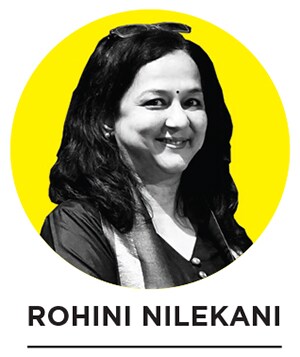
Philanthropy should be humble, but not modest: Rohini Nilekani
Apart from building a flexible and resilient framework for the future, philanthropists, civil society and the government must work in tandem so that every rupee is absorbed on the ground
 Illustration: Sameer Pawar
Illustration: Sameer Pawar
 We can definitely say that civil society and the philanthropy sector stepped up rapidly in the face of the pandemic, March 2020 onward. Very quickly, personal philanthropy foundations, corporates and individuals pivoted their programmes to give immediate assistance and humanitarian aid to whoever they could find and trust. No matter what plans they had for their budgets in 2020-21, those changed to be largely dictated by the needs of people and institutions on the ground.
We can definitely say that civil society and the philanthropy sector stepped up rapidly in the face of the pandemic, March 2020 onward. Very quickly, personal philanthropy foundations, corporates and individuals pivoted their programmes to give immediate assistance and humanitarian aid to whoever they could find and trust. No matter what plans they had for their budgets in 2020-21, those changed to be largely dictated by the needs of people and institutions on the ground.
On the heels of that, most people and organisations also recognised the need to look at their portfolios, change the way they measure how they give, and be more open-minded. I know of several philanthropists who told civil society organisations that they will not hold them to hard indicators of impact and that they will be more flexible with respect to changing budget heads or responses as needed.
Within a few months, some of the more serious philanthropists realised the need to develop a flexible and resilient framework for the future, be it by supporting good leadership, allowing flexibility in creation of metrics for impact, allowing organisations to pivot based on the needs on the ground, rethinking how to move from project to programmatic mode, or even tweaking one’s theory of change itself.
Last year, while philanthropists had to immediately address Covid-19 relief needs, civil society organisations were changing how they work. Those working in water, in sanitation, agriculture, education or other areas had to shift their attention to pandemic-related work. So there was no choice for them or the funders in the past 1.5 years. Looking forward, however, things have to be different.
Philanthropic organisations have to keep their budgets relatively flexible to be able to respond to temporary disasters that are going to come at us, wave upon wave. I’m not being pessimistic, but realistic. We’ve had enough data over the past 10 years to see how droughts, public health emergencies or just market-related emergencies like the financial crisis hit us. Planning for what you cannot plan for is becoming critical for philanthropic organisations.
(This story appears in the 30 November, -0001 issue of Forbes India. To visit our Archives, click here.)



 Children gather at a park in Mumbra, Mumbai, every evening to read books brought by NGO Parcham. Civil society organisations are key to creating on-ground impact of philanthropy
Children gather at a park in Mumbra, Mumbai, every evening to read books brought by NGO Parcham. Civil society organisations are key to creating on-ground impact of philanthropy



